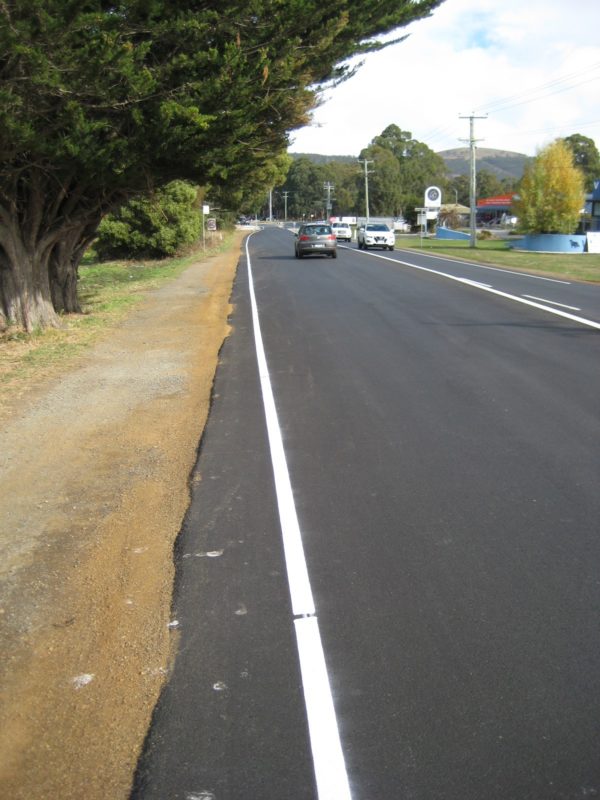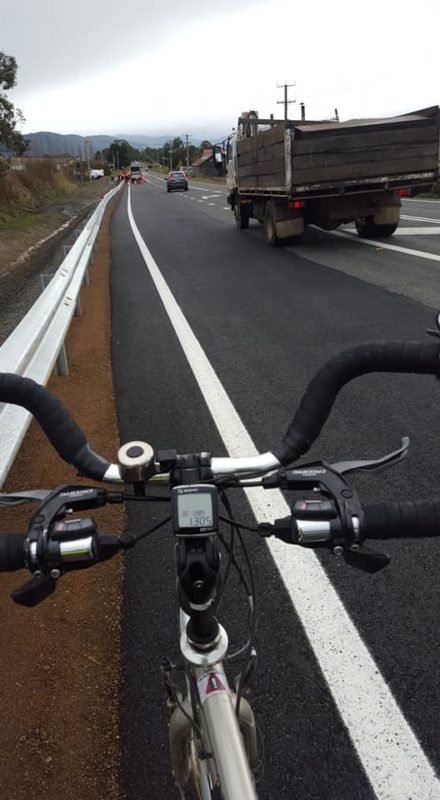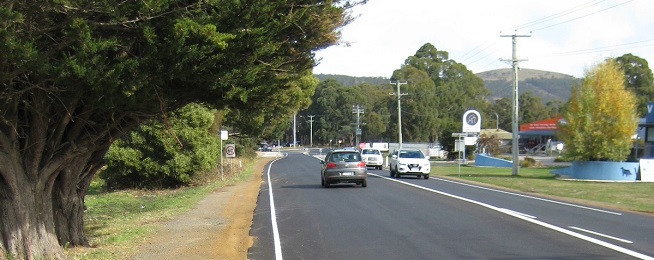Tasmania’s cycling provisioning policy is good in theory but has been let down by the delivery of recent upgrades, which have made roads more dangerous for riders.
The state government’s Positive Provision Policy for Cycling Infrastructure was published in October 2013. https://www.transport.tas.gov.au/__data/assets/pdf_file/0013/112630/PPP-Mainstreaming-Final_081013.pdf
The policy basically requires the Department of State Growth to consider cycling infrastructure when it’s upgrading, improving, building or maintaining a state road that is identified in the Principal Urban Cycling networks or arterial cycling networks.
Incorporating cycling facilities into other transport projects can reduce costs in the long run, as the labour force is already on site. It also means that bike riders can get some benefits from the huge budgets being allocated to road projects.
It doesn’t compel the government to provide cycling infrastructure, just consider it. If the project manager doesn’t think cycling infrastructure should be part of a project then s/he can argue against it to a departmental panel.
It also doesn’t mandate the type of cycling infrastructure to be built and allows for land to be set aside for future cycling infrastructure, rather than building it while the project is underway.
This differs from other states, such as Western Australia, which outlines that a shared path must be built alongside freeways and highways. And Queensland, which states that bike paths, lanes or shared paths must be “expliclity provided” on state roads which make up its principal cycle network.
In Victoria, the government has mandated that new cycling facilities be built as part of any major transport projects and that the Safe Systems approach be taken, where people on bikes are physically separated from motor vehicle traffic on high volume routes. Victoria is also working with local government to apply cycling route classifications that will establish high quality cycling corridors.
Tasmania also follows the Safe Systems approach to road design, but this is not reflected in the Positive Provision Policy for Cycling Infrastructure. Having an explicit direction to provide cycling infrastructure on the Principal Urban Cycling Networks and regional networks could help provide clearer direction to project managers.
The other issue to be tackled outside the provisioning policy is the hierarchy of cycling routes in the agreed urban and regional cycling networks. While a wide, sealed shoulder may be suitable on routes popular with road cycling, in urban centres with high traffic volumes separated cycleways may be more appropriate. Classifying routes and determining the design standards for the different route classes may also help improve the delivery of cycling infrastructure.
Recent upgrades have made roads worse
There are have been a few recent examples in the south of the state where routine upgrades of state roads have led to poor outcomes for cyclists.
The Channel Highway between Kingston and Huntingfield was recently resurfaced and line marked. But when the linemarking was done the travel lanes were made wider at some points which narrowed the shoulder, forcing bike riders into the travel lane.

The Department of State Growth has confirmed the line marking was not supposed to look like this and will be redone.
The other examples are poorly situated safety barriers.
On the Huon Highway where it meets the new Summerleas Road junction the placement of a safety barrier close to the shoulder’s edge has resulted in local cyclists complaining they feel trapped in a limited amount of road space.
And on the Huon Highway outside Willie Smith’s Cider, changes to the road to improve safety for motor vehicle drivers has reduced safety for people riding.
People riding along the highway are now forced into the travel lane by a safety barrier that has been placed close to the edge of the shoulder, even though there was room to seal out further to give riders more space between the line and safety barrier.
Speaking at the recent parliamentary budget estimates session, head of State Roads Shane Gregory said the safety barrier hadn't been in the original plans and it's likely it will be removed and the land where it's standing sealed, which would provide a wider shoulder for riding.

These examples could have led to a win-win situation where we could have seen narrower travel lanes to slow traffic and more ample shoulders for cycling.
They also show the policy is not always being followed on the ground as the policy clearly states for road upgrades and improvements that:
“Where the improvement or upgrade provides traffic engineering improvements such as the installation of roundabouts, traffic islands, traffic signals, new intersections and changes to line markings and lane widths for other road users, these improvements will also cater for cyclists.”
“Where safety barriers are installed as components of road upgrading and improvement projects, care will be taken to ensure that these do not reduce available space or create a hazard for cyclists.”
The other ongoing issue with some road resealing work is the use of large aggregate chip on cycling routes. The government’s policy describes mitigation treatment for roads where aggregate above 10 mm is used, however, we would prefer to see final aggregate seals limited to 7 mm on cycling routes. There are some technical and budgetary considerations around the use of road seals, but we will endeavour to work with the government to get a better outcome for road cycling.


